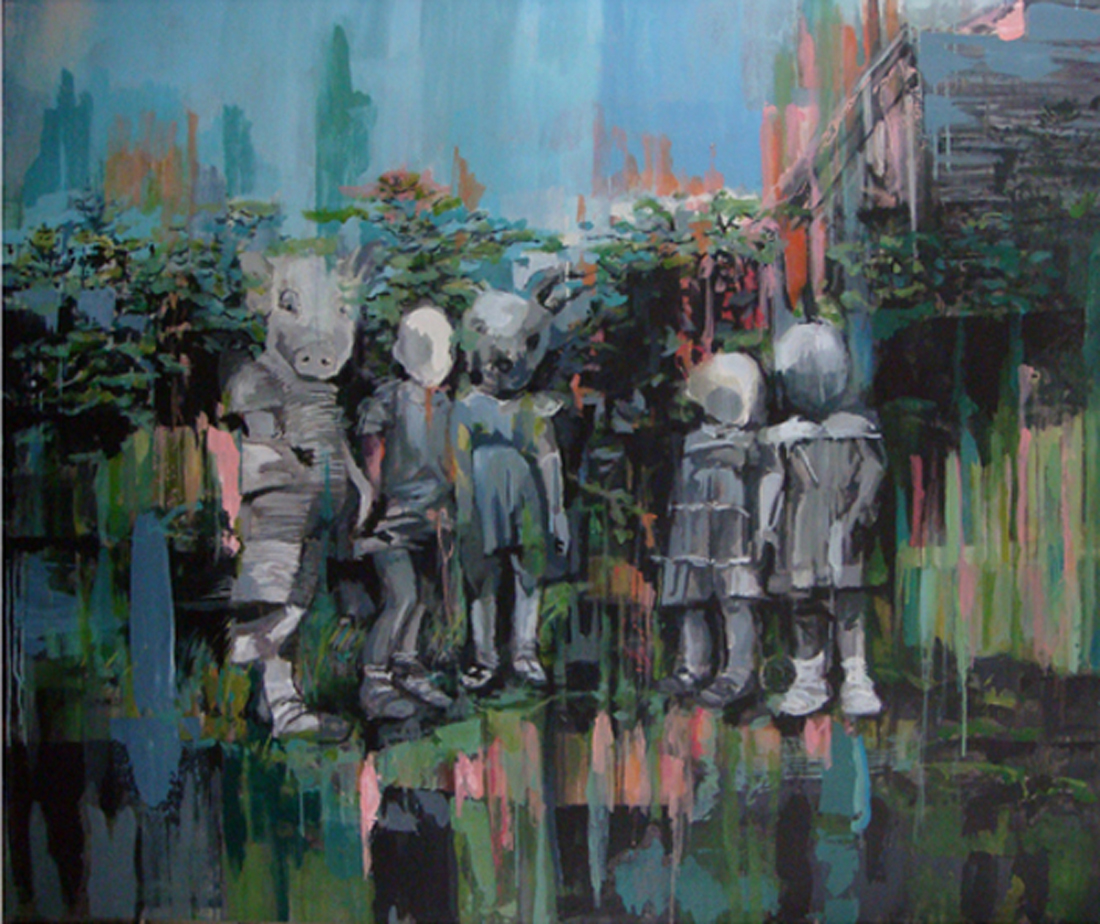Painful Beautfy II

“…his whole life was proof that without self-love it is also impossible to love others, and that hating oneself is exactly the same, and in the end produces the same horrible lonliness, and the same desperation, than the most raging selfishness.”
Herman Hesse, “The Lone Wolf”
Beauty is an intellectual construction, loaded with an infinite number of interpretations and subject to multiple definitions.
Although it is mainly associated with esthetics, the mere mention of the word immediately brings us pleasant feelings, beautiful images, and makes us feel balanced with what we are seeing, “quae visa placet,” as Saint Thomas of Aquino would say.
“Painful Beautfy” brings together the work that Sofía Echeverri has carried out during the past five years, and that represents a long journey of investigation, searching and, above all else, discovery of a personal language which marks the different stages through which her artistic labors have passed.
Although at first glance they don’t seem to have much of a dialogue between them, the different selected pieces, part of exhaustive series of work from different moments and scenarios, share the profound worries of the author about the impact and responsibility of our passing through the world.
And what does that have to do with beauty? Why mix it with pain? Well, because going back once again to Saint Thomas, beauty is determined by way of sight, but he himself broadens the spectrum even more and takes us to a new space: that of perception.
To perceive beauty can imply wanting to find the perfect balance and equilibrium with those that surround us and to search for positive emotions and reflections that reconcile us with our own existance.
And it’s right here where Echeverri confronts us with ourselves and our search for beauty. Master of impecable technique and sofisticated esthetics, the landscapes and characters that she unfolds in front of us unavoidably take us to dark places, to conflicting feelings where we are attracted by way of canvas and paper full of beautiful images, only to be confronted by fear, desolation and sadness.
The protagonists in her work, whether it be these children, animals or natural landscapes, present themselves defenseless, marked with the scar of human actions.
And in this way the series “Hibrid Girls” and “Prohibited Games” appear before our eyes, where children cover their faces with animal masks to avoid/evade/escape their reality; meticulously drawn apes find themselves alone on the imaculate white paper: they are the “Saturninos”: pensive, sad animals that although we don’t know exactly what their fate will be, their absent-mindedness makes us imagine the worst; “Trampland”: a play on words, where majestic mountain ranges and idilic landscapes present traces of a commercial exploitation; “Requiem”: animals that are sleeping or dead, we are not sure, but at least they appear at peace. And perhaps the most personal series, “Evil Formlessness”: ideas, judgements and fears that come out of the mind of the artist.
In this work, lonliness, danger, injustice and uncertainty dwell and the characters are always vulnerable and marvelous: they are beautiful, painfully beautiful.
